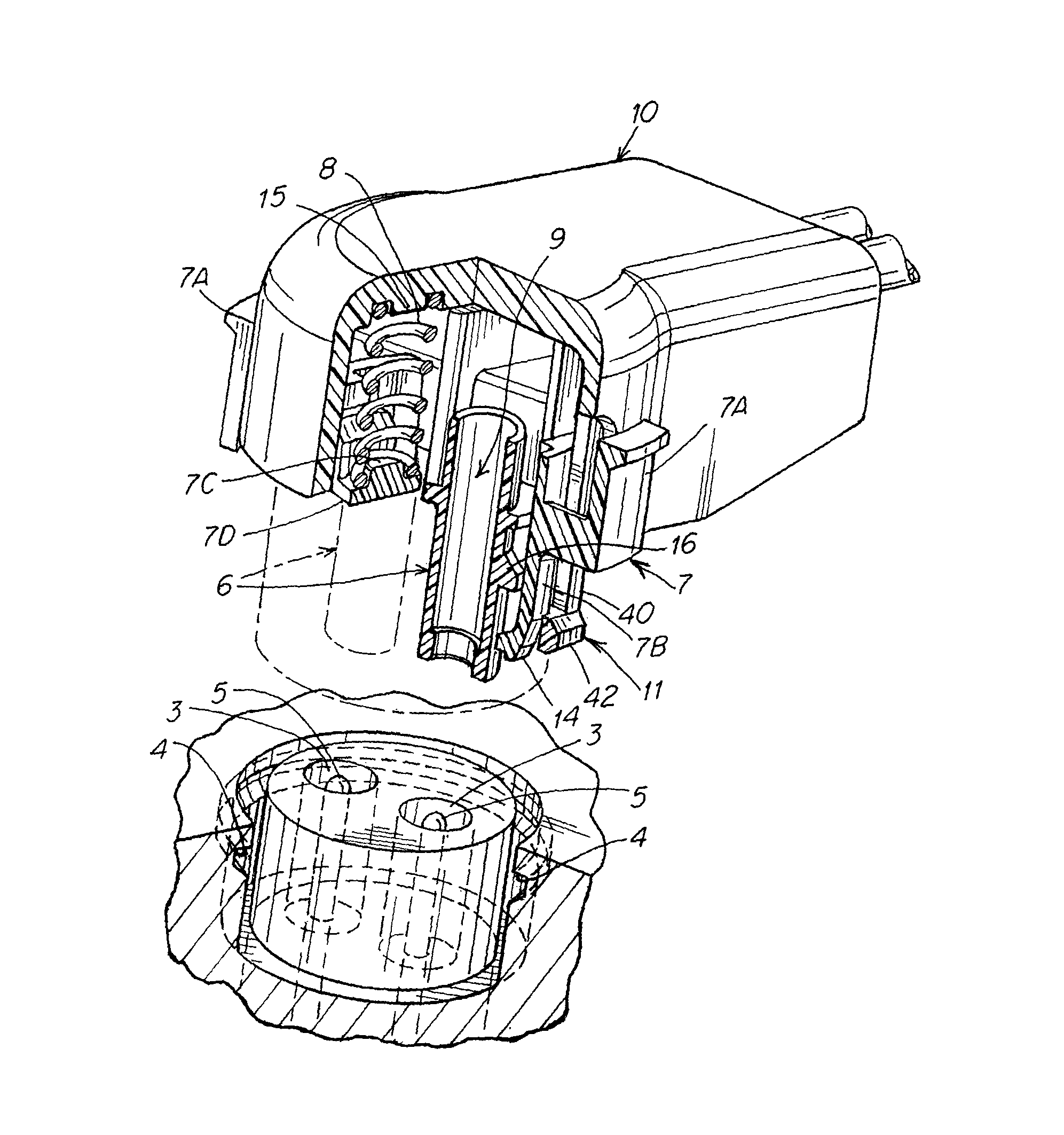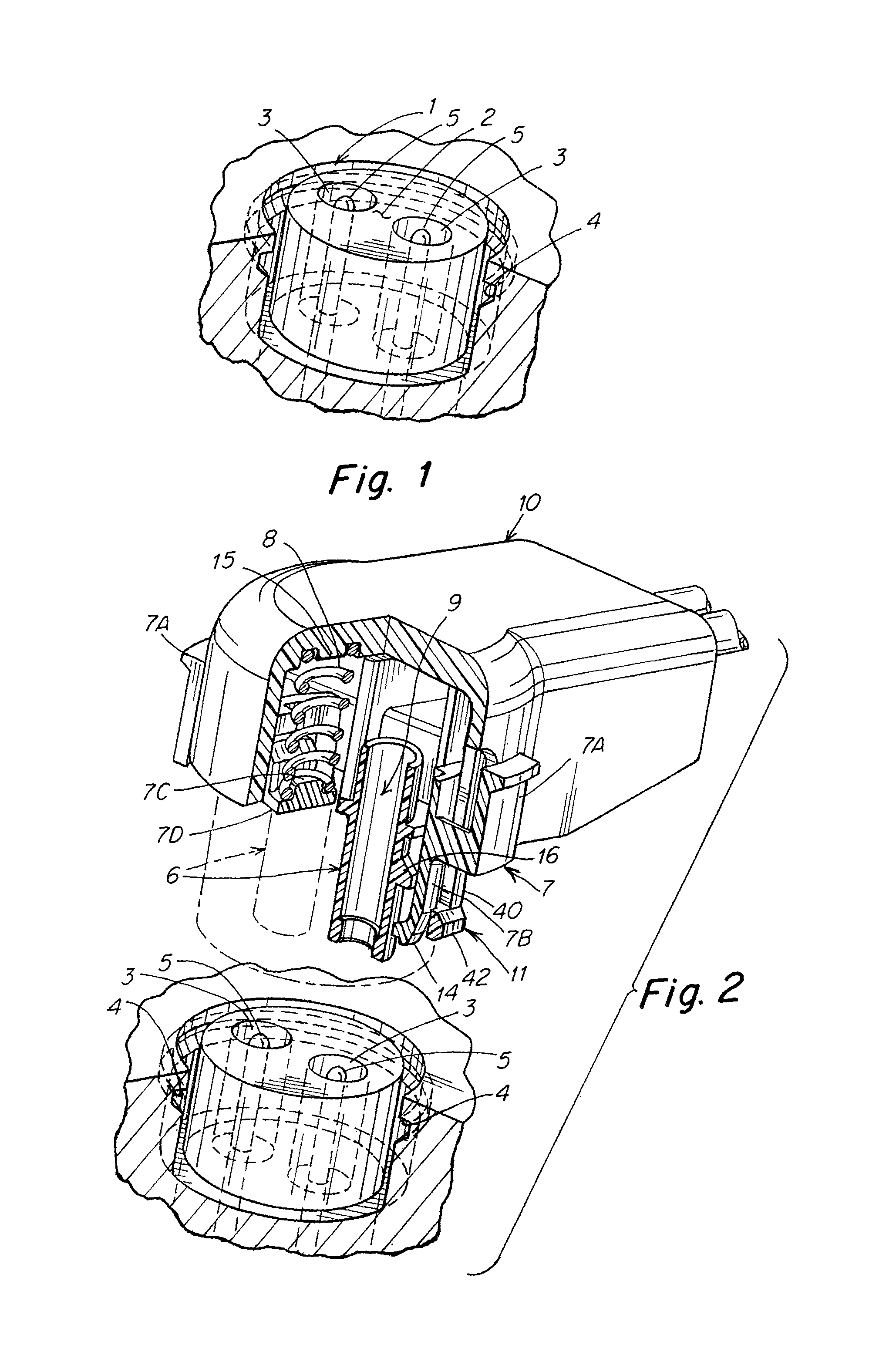Self-rejecting automotive harness connector
a technology of automotive harness and electronic connector, which is applied in the direction of coupling device connection, coupling device engagement/disengagement, incorrect coupling prevention, etc., and can solve the problems of affecting the electrical interconnection properties of the cable, and affecting the reliability of the cabl
- Summary
- Abstract
- Description
- Claims
- Application Information
AI Technical Summary
Benefits of technology
Problems solved by technology
Method used
Image
Examples
Embodiment Construction
[0076]Referring to the accompanying drawings wherein the same reference numbers refer to the same or similar elements, FIG. 1 shows a broken-view partial cross section of a typical, generally circular receptacle as an example of a receptacle to which the inventive connector assembly is designed to mate in a highly dependable and reliable manner. This receptacle is also referred to as a “plug connector” herein and the inventive connector assembly is also referred to as a “receptacle connector” herein. Certain features of the receptacle are controlled by industry standards and are outside the scope of this invention. Generally, the receptacle offers a substantially annular cavity 1, an outward facing bulkhead surface 2 of a cylindrical form inside the cavity 1 and that is generally perpendicular to the direction of line of action of the mating motion of the connector assembly to the receptacle, and a plurality of terminal-containing apertures 3 within which reside a set of electrical ...
PUM
 Login to View More
Login to View More Abstract
Description
Claims
Application Information
 Login to View More
Login to View More - R&D
- Intellectual Property
- Life Sciences
- Materials
- Tech Scout
- Unparalleled Data Quality
- Higher Quality Content
- 60% Fewer Hallucinations
Browse by: Latest US Patents, China's latest patents, Technical Efficacy Thesaurus, Application Domain, Technology Topic, Popular Technical Reports.
© 2025 PatSnap. All rights reserved.Legal|Privacy policy|Modern Slavery Act Transparency Statement|Sitemap|About US| Contact US: help@patsnap.com



